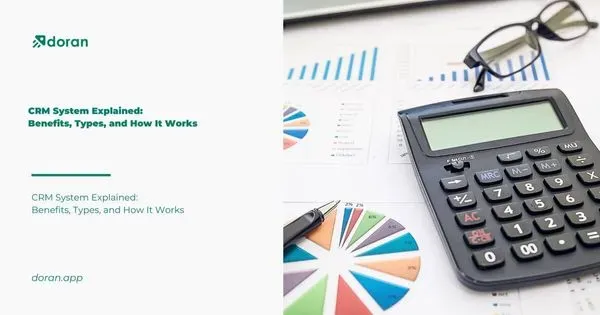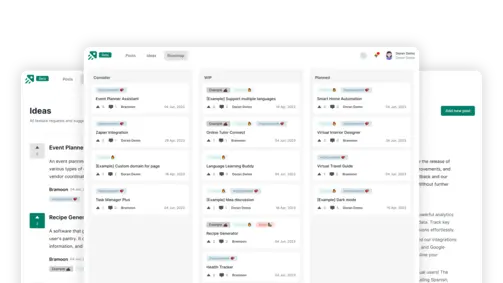Top 9 Customer Success Metrics You Should Prioritize
Create changelog and product roadmap for your product
Explore nowTable of contents 7 min
When it comes to effectively managing and understanding your business, tracking key customer success metrics is vital. These metrics not only help you gauge the health of your customer relationships but also provide actionable insights to drive growth, enhance customer satisfaction, and boost overall profitability. Let’s explore some of the most important customer success metrics that businesses should focus on.
Customer Health Score
The Customer Health Score is a crucial metric that helps businesses determine the overall satisfaction and engagement level of their customers. It provides a predictive indication of whether a customer is likely to continue doing business with you. This metric combines various factors, such as usage frequency, product adoption, and customer support interactions, to generate a score that reflects the customer’s overall health.
A high Customer Health Score suggests that a customer is satisfied and engaged, while a low score could indicate potential issues that may lead to churn. Monitoring this metric allows businesses to identify at-risk customers and take proactive measures to improve their experiences, thereby enhancing their longevity with the brand. This proactive approach can significantly impact other customer success metrics like Customer Lifetime Value and Customer Churn Rate, making the Customer Health Score an indispensable tool in the arsenal of client success metrics.
Net Promoter Score
The Net Promoter Score (NPS) is one of the most widely used customer success metrics for assessing customer loyalty. It measures the likelihood of customers recommending your product or service to others by asking a single question: “On a scale of 0-10, how likely are you to recommend our company to a friend or colleague?” Customers are then categorized as promoters (those who score 9-10), passives (7-8), or detractors (0-6).
A high NPS indicates a strong base of loyal customers who are likely to advocate for your brand, driving organic growth through word-of-mouth. Conversely, a low NPS may highlight dissatisfaction, suggesting that improvements are needed to turn detractors into promoters.
Tracking NPS over time helps businesses understand trends in customer loyalty and make informed decisions to enhance overall customer satisfaction.
Find out more: How to Calculate NPS & What does NPS Stand for
Customer Churn Rate

The Customer Churn Rate is a critical customer success metric that measures the percentage of customers who stop using your product or service within a given period. This metric is particularly important for subscription-based businesses, where high churn rates can signal dissatisfaction and directly impact revenue. Understanding why customers churn—whether due to product issues, poor customer service, or better alternatives, is essential for developing strategies to reduce churn.
By analyzing this metric, businesses can identify patterns and implement targeted retention efforts, such as personalized engagement campaigns, product enhancements, or loyalty programs. Reducing churn is key to maintaining a stable customer base and achieving long-term growth.
Monthly Recurring Revenue
Monthly Recurring Revenue (MRR) is a fundamental financial metric for subscription-based businesses, reflecting the total predictable revenue generated from ongoing customer subscriptions each month. MRR is a direct indicator of your business’s financial health and a crucial component of customer success metrics because it ties closely to customer retention and satisfaction.
Monitoring MRR allows businesses to track growth trends, forecast future revenue, and assess the impact of changes in pricing, product offerings, or customer retention strategies. A growing MRR suggests that customers are not only sticking with your product or service but also potentially upgrading or expanding their subscriptions. Conversely, a declining MRR could indicate rising churn or customer dissatisfaction, requiring immediate attention to correct course.
Customer Lifetime Value

Customer Lifetime Value (CLTV) is a predictive metric that estimates the total revenue a customer will generate for your business throughout their entire relationship with you. As one of the most important customer success metrics, CLTV provides insights into the long-term value of acquiring and retaining customers.
A high CLTV indicates that customers are loyal, making repeat purchases, and remaining engaged with your brand over time. Businesses can use CLTV to make informed decisions about customer acquisition strategies, determining how much they can afford to spend to attract new customers while ensuring a positive return on investment. By focusing on increasing CLTV, businesses can enhance profitability and secure long-term growth.
Customer Retention Cost
Customer Retention Cost (CRC) measures the amount of money a business spends to retain existing customers. This metric includes expenses related to loyalty programs, customer support, personalized marketing efforts, and any other initiatives aimed at keeping customers engaged and satisfied. CRC is an important customer success metric because it helps businesses evaluate the efficiency of their retention strategies.
A low CRC with high customer retention indicates that your efforts are effective and cost-efficient, while a high CRC might suggest that your strategies need reevaluation. Balancing CRC with Customer Lifetime Value is crucial, as it ensures that the cost of retaining customers is justified by the revenue they generate over time.
Customer Effort Score
The Customer Effort Score (CES) is a metric that measures the ease with which customers can interact with your business, whether they are navigating your website, making a purchase, or resolving an issue through customer support. This metric is based on the idea that the less effort customers have to expend to achieve their goals, the more satisfied they will be.
In today’s competitive market, where customer experience is a key differentiator, a low CES can set your business apart. By tracking CES, businesses can identify friction points in the customer journey and make improvements to streamline the experience. Enhancing CES can lead to higher customer satisfaction, lower churn rates, and better overall performance in other customer success metrics.
First Contact Resolution Rate

First Contact Resolution (FCR) Rate is a customer service metric that measures the percentage of customer issues resolved during the first interaction with your support team. A high FCR rate indicates that your team is effective at addressing customer concerns promptly, leading to higher customer satisfaction and loyalty. On the other hand, a low FCR rate may suggest that customers are experiencing repeated issues or that your support team needs additional training or resources.
Improving FCR is crucial for enhancing the overall customer experience, as it reduces the need for customers to make multiple contacts to resolve their issues. This, in turn, positively impacts other customer success metrics like Customer Satisfaction Score and Customer Effort Score.
Customer Satisfaction Score
The Customer Satisfaction Score (CSAT) is one of the most straightforward customer success metrics, measuring how satisfied customers are with a particular interaction or their overall experience with your business. Typically gathered through post-purchase surveys or after customer support interactions, CSAT provides direct feedback on customer perceptions.
A high CSAT indicates that customers are happy with your product, service, or support, which can lead to repeat business and positive word-of-mouth. Conversely, a low CSAT may signal dissatisfaction, requiring immediate attention to address the underlying issues. Regularly monitoring CSAT helps businesses maintain a pulse on customer sentiment and make necessary adjustments to improve the overall customer experience.
Read more: CSAT vs NPS vs CES Comparison: Choosing the Right Customer Metric
In conclusion, understanding and optimizing these key customer success metrics is essential for businesses looking to enhance customer satisfaction, build loyalty, and drive sustainable growth. By focusing on metrics such as Customer Health Score, Net Promoter Score, Customer Churn Rate, and others, businesses can make data-driven decisions that lead to improved customer experience and long-term success.
What to not miss out on our blog
Gain insightful knowledge and invaluable experiences from dedicated experts.

CRM System Explained: Benefits, Types, and How It Works
Discover everything about CRM system. Learn the benefits and how a CRM system works to improve customer relationships and streamline business operations.

Are you ready? Start your free trial today.
Enhance communication, keep track of the progress, understand customers' insight and more by taking your first trial on Doran.
Sign up for free

